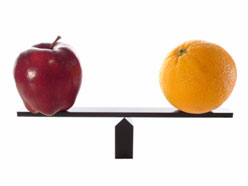
Comparing hedge fund performance to the S&P 500 can be an apples to oranges exercise, says AIMA.
Instead, AIMA has these five steps to understanding hedge fund performance.
• Look at risk-adjusted returns: Hedge funds consistently outperform U.S. equities (as measured by the S&P 500), global equities (MSCI World) and global bonds (Barclays Global Aggregate ex-USD Index) on a risk-adjusted basis, a crucial measure for investors. Even during the stock-market rally of recent years, hedge funds performed better on a risk-adjusted basis than the S&P 500 and MSCI World.
Read: AIMA announces research award winners
• Look at long-term data: Short-term data such as monthly comparisons can be misleading, so look at long-term figures. Hedge funds have outperformed the main standalone asset classes over the 10 years to the end of 2013 both in terms of headline returns and on a risk-adjusted basis.
Read: Barclays exec to head AIMA
• Look at the returns by strategy: Hedge fund strategies are diverse and have different characteristics, which can play different roles in investor portfolios. Hedge funds are not an asset class.
Read: Capital markets fuel economy
• Compare with the most relevant asset class: How do different strategies perform in relation to the most relevant asset class to that strategy?
Read: Hedge funds spending more on compliance
• Be aware of differences between hedge fund indices: During the five years to the end of 2013, the main hedge fund indices produced notably different results, reflecting variations in constituency and methodology.
For more, read Apples and apples: How to better understand hedge fund performance.